|
Projects - "For Rest" - Littoral Rainforest,
Coastal Wetlands and Coastal Dunes
This is an on-going project known as "For Rest", a name given by the owners,
as a place to go to unwind and enjoy the natural environment.
Photo 1: Coastal wetlands - a pond created by rutile miners in early 1970s
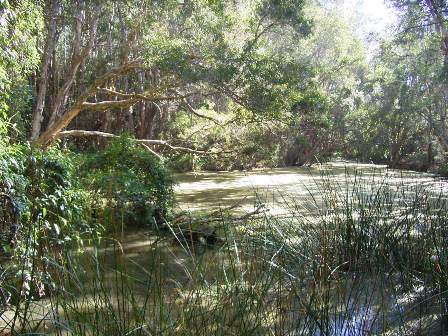
The property is located near Crescent Head on the mid-north coast of NSW.
As of 2nd November, 2005 the project area is protected by a voluntary Conservation
Agreement under the National Parks and Wildlife Act, 1974. The land is
also protected under two State Environmental Planning Policies (SEPPs). The first,
SEPP 26 covers an area defined as Littoral Rainforest dominated by brush box
(Lophostemon confertus). The 2nd is SEPP 14 Coastal Wetlands.
The Littoral Rainforest is 1 of only 4 small pockets of this vegetation
community between Crescent Head and Port Macquarie. This vegetation is also
an endangered ecological community under the Threatened Species Conservation Act, 1995.
Photo 2: View over Littoral Rainforest and Coastal Wetland canopy

The Coastal Wetland is dominated by broad-leaved paperbark (Melaleuca quinquenervia)
and swamp oak (Casuarina glauca).
This site contains habitat for the spotted tail quoll (Dasyurus maculatus)
of which there has been 1 sighting. The spotted tail quoll is listed as vulnerable
on Schedule 2 of the Threatened Species Conservation Act, 1995. Within the Littoral Rainforest
are also a number of plants listed on Schedule 1 and 2 of the Threatened Species
Conservation Act, 1995.
This property forms part of a mapped corridor of regional significance, between
Hat Head National Park and Limeburners Creek Nature Reserve.
"For Rest" is also significant as a refuge for birds and animals with 113 species of birds
and animals having been recorded to date. This
property will provide a long term haven as the surrounding area is developed.
Since 1992 Dingo Creek Rainforest Nursery from nearby Bobin (near Wingham)
has been contracted to carry out bush regeneration and collect seeds and
grow plants for restoration.
All works have been
carried out through consultation with all interested parties, including Department of
Environment and Conservation, Kempsey Shire Council, Dingo Creek Rainforest
Nursery and the owners (founders of IEWF), with Dingo Creek Rainforest Nursery making all
day to day decisions as to how to meet and implement the project goals.
One of the earlier initiatives was to fence the Littoral Rainforest
to exclude the neighbours cows which proved very successful in stimulating natural
regeneration. Later the Coastal Wetlands were also fenced which facilitated a dramatic
change in the health of this area.
All plantings along the disturbed edges and in the coastal dune area (for stabilisation after
bitou bush removal) have had to be caged to protect them from red-necked wallabies and kangaroos.
Photo 3: 1992 slope stabilisation using logs and matting
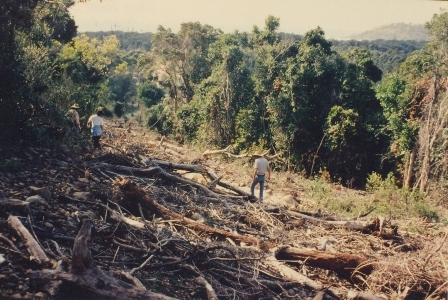
Initially a large part of the regeneration works involved stabilising a disturbed slope by
positioning logs and matting, and by planting natives grown from provenance seed and
removing weeds. Quickly this work expanded to locating and removing invasive plants from the entire
littoral rainforest and coastal wetlands areas.
In November 1998 the coastal dune area was also fenced including an area of crown land as agreed with
the authorities and since then a strategy for bitou removal and dune stabilisation has been undertaken.
Photo 4: Planting and natural regeneration on coastal dunes
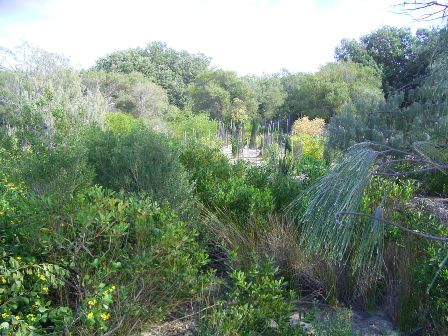
Now the trees along the disturbed edge are 4 and more metres tall with a thick
understorey of planted and naturally regenerated plants. The Coastal Wetlands and Littoral Rainforest
are relatively free of weed species, especially the larger more invasive ones.
There are still non native grasses that were introduced by the cows
however as the canopy thickens these are being shaded out.
Photo 5: 2006 neighbours property impacted by cows
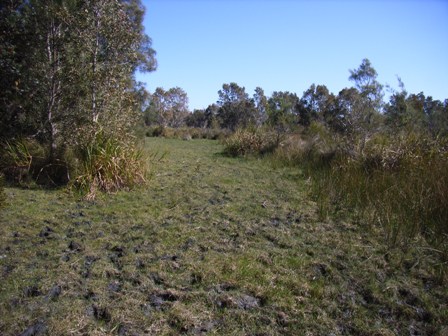
Photo 6: Looking across the regenerated wetlands from near the old causeway
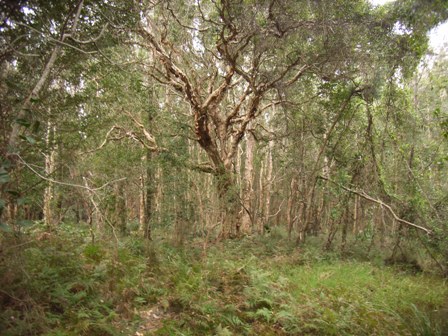
The coastal dune area is progressing well with bitou bush removal and
stabilisation on-going.
This area has seen significant advances in the past few years with consolidation of
internal regenerated areas and native wind barriers replacing the bitou bush.
Photo 7: Looking across treated and living bitou bush towards Big Hill headland
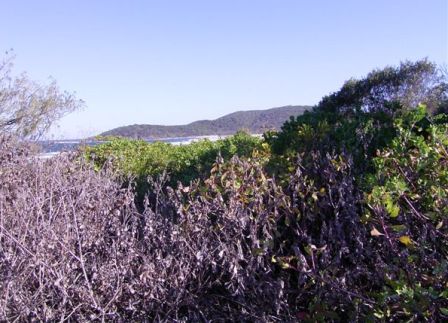
To date this project has been mostly funded by the owners.
In 2006 the Conservation Partnership Unit of the NSW National Parks and Wildlife Service contributed
funds for bush regeneration which helped with the on-going maintenance of the
wetlands and littoral rainforest.
In November 2006 a grant was won with the Australian Government EnviroFund
to extend the stabilisation and regeneration of the dunal area (5 hectares)
through to May 2008. The work undertaken
with this funding allowed further strategic removal of bitou bush and
planting to prevent wind corridors and erosion. All plantings were of plants grown from seed
collected from the site and grown by Dingo Creek Rainforest Nursery.
In 2008 we received a three year Private Land Conservation grant from the
Foundation for National Parks & Wildlife. These funds are helping to continue the removal of Bitou Bush
from the dunal area and the adjoining Littoral Rainforest area. Our story was on page 17 of the Summer 2010/11
edition of the PAWS newsletter.
In 2011 we received another Private Land Conservation Grant from the Foundation for
National Parks & Wildlife for a further three years.
This is fantastic as Bitou, with its 10 year+ seed viability, is definitely a weed that requires long-term
perserverance for it's control.
We are appreciative of the support shown by all interested parties.
Also a special thank you to Dingo Creek Rainforest Nursery for their on-going commitment
to this project.



|